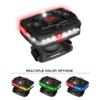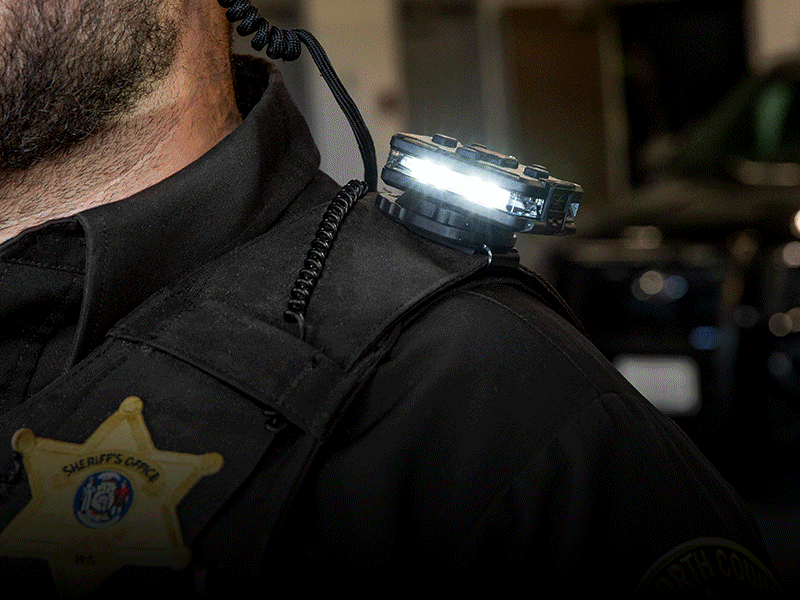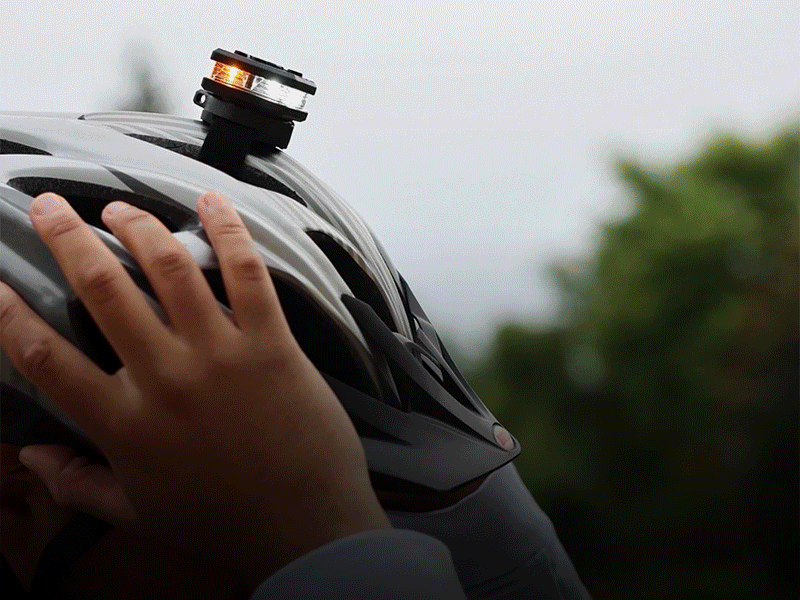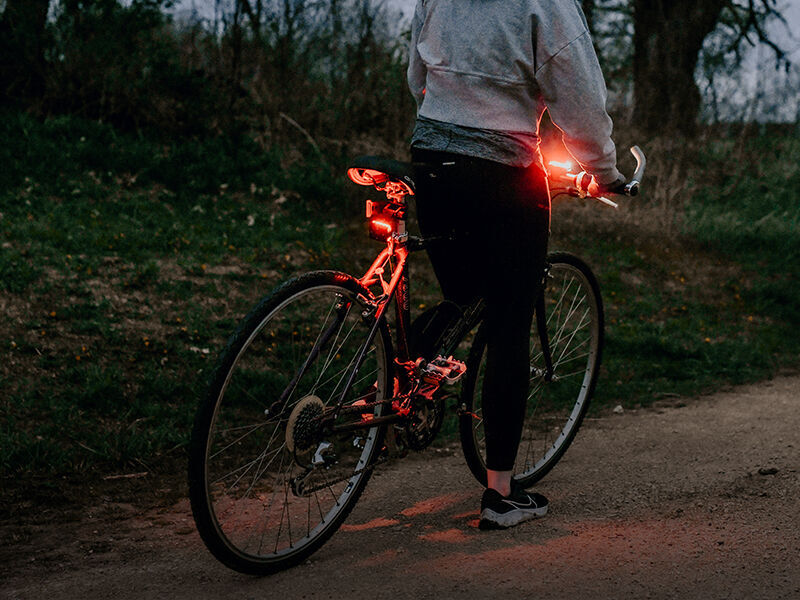Essential Gear and Tips for Riding Out a Storm
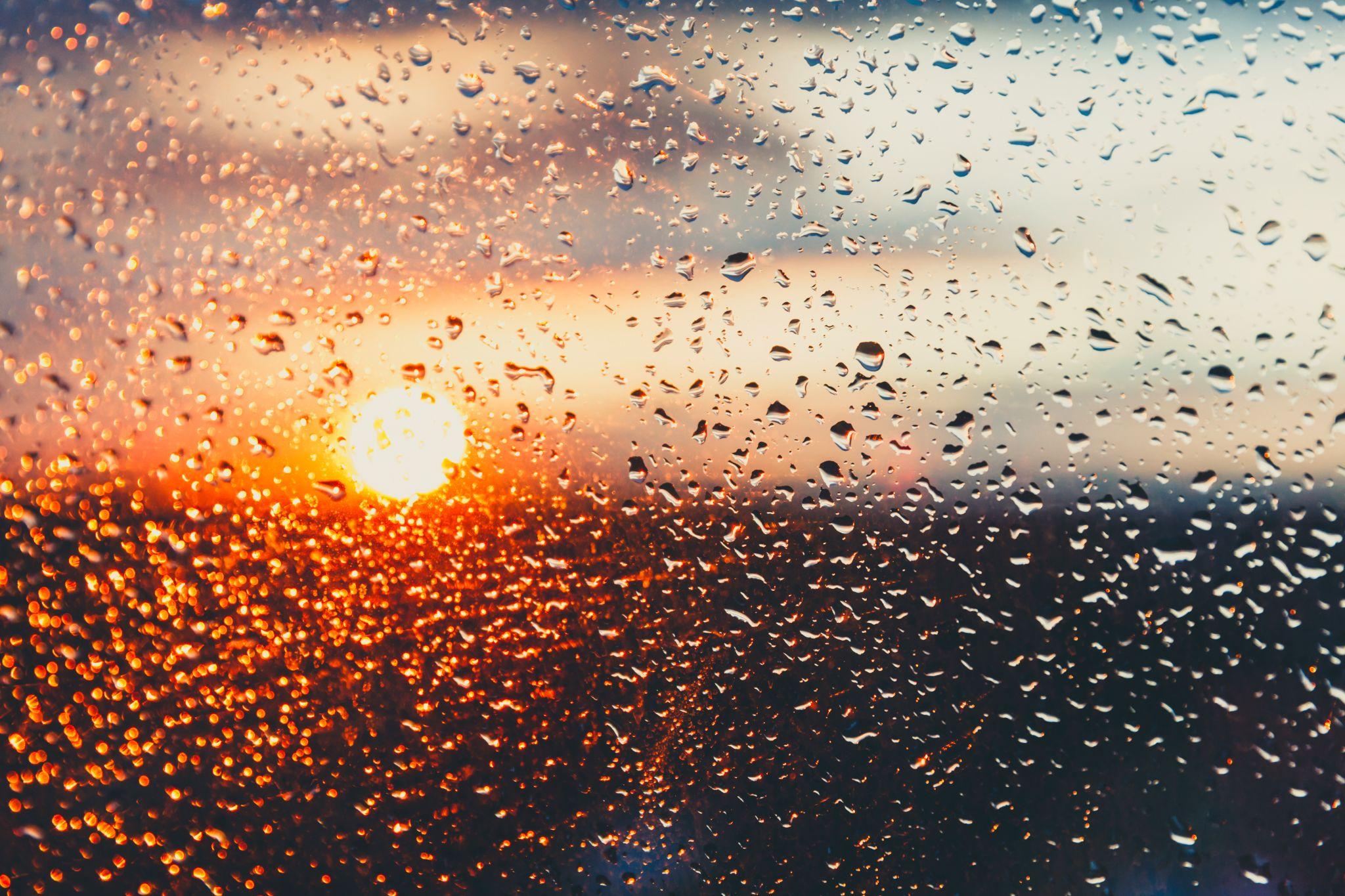
When dangerous weather is on the horizon, you need to act fast and decisively. Power can go out. Roads can flood. Help might not arrive for hours — or days. The time to prepare isn’t when the warning sirens sound. It’s now.
Proper storm preparation means having the gear, plans, and tools in place before conditions turn dangerous. This guide covers what you need to survive a storm — at home or on the go — and how Guardian Angel wearable lights can help keep you safe and visible.
Emergency Preparedness Basics
Storm preparation begins with a plan and the right gear. Know your evacuation routes. Keep emergency contacts written down — not just stored on your phone. Identify a safe shelter in your home and make sure everyone knows how to reach it. If you have pets, children, or elderly family members, account for their needs in advance.
One often overlooked detail: keep copies of key documents — ID, insurance info., etc. — in a waterproof folder or dry bag. It’s also smart to have digital backups on a hard drive or the cloud, in case your paper copies are damaged.
Stay informed. Sign up for local weather alerts. Monitor multiple sources — FEMA apps and NOAA radio are helpful — to track changing conditions, and be prepared to evacuate immediately if advised. Having a plan in place helps you stay calm and focused, whether you’re forced to evacuate or shelter in place.
Must-Have Gear for Home Storm Readiness
To survive a storm at home, you’ll need more than just a flashlight and bottled water. Build a storm survival kit that covers basic needs for at least 72 hours. Start with the essentials:
- One gallon of water per person, per day
- Non-perishable food and a manual can opener
- First-aid kit and a week’s worth of medications
- Flashlights (avoid candles), extra batteries, and a NOAA weather radio
- Power banks or solar chargers for phones
- Hygiene items like wipes, hand sanitizer, and garbage bags
Don’t forget critical tools and supplies. A multi-tool, tarp, duct tape, and fire extinguisher can help with minor repairs or damage control. Keep cash on hand — ATMs and card readers often go offline during blackouts.
Rain gear matters, too. If you need to check outside damage or help a neighbor, a raincoat, waterproof boots, and work gloves can keep you dry and protected.
And don’t forget your lighting. Guardian Angel Elite Series wearable lights offer hands-free illumination, ideal for moving through dark stairwells or signaling for help outside. Unlike traditional flashlights, our Elite Series lights are rugged, waterproof, and clip to your jacket or gear.
Smart prep goes beyond stocking shelves. Before the storm hits, turn your fridge and freezer to the coldest setting. Unplug electronics. Fill your tub with water for sanitation use. Bring outdoor objects indoors (e.g., lawn chairs), or anchor them securelyt. Store your storm survival kit where it’s easy to reach in a hurry.And make sure everyone in the household knows where it is.
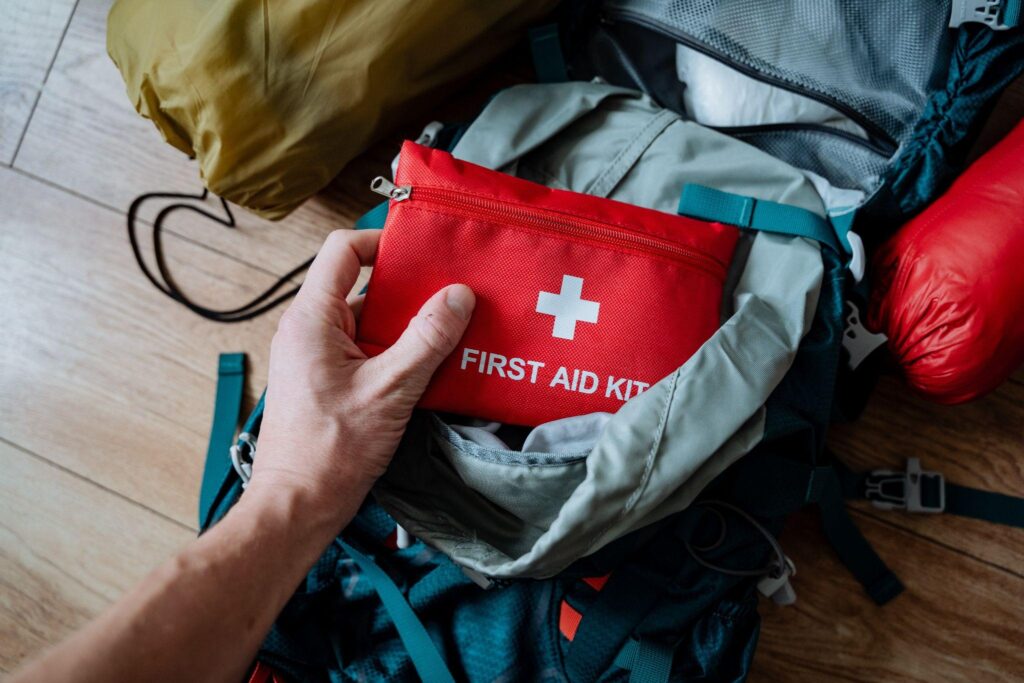
On-the-Go Essentials for Evacuation or Travel
Sometimes the safest choice is to leave. That’s when your storm-ready go kit becomes critical. A well-stocked bag should be ready to grab at a moment’s notice. Store it where you can reach it fast.
Unlike a general bug-out bag, this go-kit should contain items that perform in wet weather and power outages.
Pack essentials like:
- Photo ID, insurance documents, and spare keys — all sealed in a waterproof folder
- A charged power bank and a secondary charger that works off solar or your vehicle
- Non-perishable snacks and bottled water to stay fueled on the move
- Medications in water-resistant containers, along with hand sanitizer and personal wipes — especially important if you’re heading to a public shelter
- A raincoat and tough shoes that can handle slick or flooded ground
- Guardian Angel Elite Series lights for visibility
It’s also a good idea to include:
- Safety goggles or glasses to protect against wind-driven debris
- Face masks or bandanas
- A whistle, small multi-tool, zip-top bags, and basic first-aid supplies
- A mylar blanket or compact rain poncho for warmth and weather protection
If you’re evacuating with kids, pets, or elderly family members, include the gear they’ll need, such as prescriptions, pet carriers, diapers, or mobility aids.
Store one storm go-bag at home and another in your car — especially during hurricane, flood, or winter-storm season. Be sure to rotate medications, snacks, and batteries every six months.
Need help packing a bug-out bag? Check out our full checklist here.
Storm Safety Tips
A few practical steps can make the difference between chaos and control during a storm.
Before the storm hits:
- Charge all devices and backup batteries
- Move outdoor items indoors or anchor them securely
- Fuel up your car — gas stations may close or run dry
- Review your evacuation route and shelter options
If you’re staying home, shelter in a small, interior room on the lowest floor — not a basement if flooding is likely. Keep your wearable light nearby in case the power cuts out. Avoid candles because they’re fire hazards. Stick to battery-powered lights like the Guardian Angel Elite Series for safe and reliable illumination.
If you’re evacuating, let someone know your route and expected arrival. Bring your go-bag, along with printed maps in case GPS fails. Use your Guardian Angel light to stay visible if you’re traveling in low light or walking near traffic.
After the storm, stay alert. Avoid standing water; it can hide debris or live wires. Don’t use tap water until officials say it’s safe. Document any damage before making repairs, and only work with licensed, insured contractors to avoid scams.
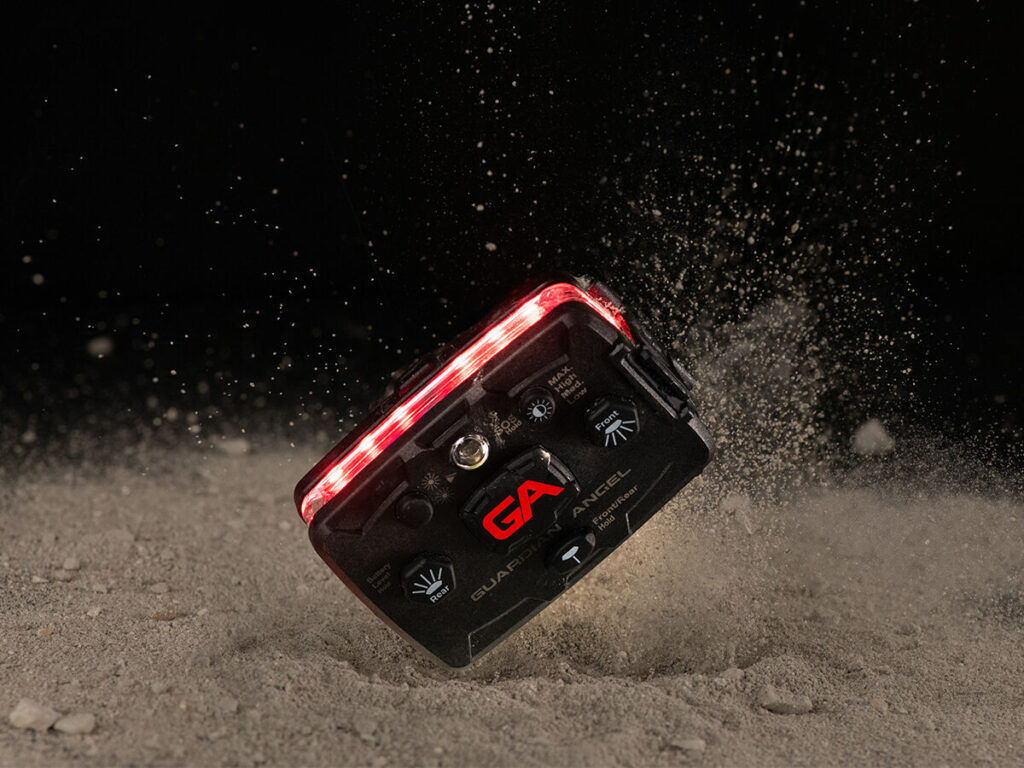
Why Guardian Angel Lights Are a Storm Essential
Power outages don’t wait for daylight — and flashlights don’t keep your hands free. That’s why the Guardian Angel Elite Series is a vital ally in a storm.
Our wearable lights offer bright, 360-degree illumination and multiple mounting options. They’re built tough — waterproof, impact-resistant, and designed to keep going through rain and other tough weather conditions. When seconds count, they help you move confidently in the dark or in poor visibility.
Rechargeable and easy to clip to your clothing or gear, Elite Series lights include multiple brightness settings and color options.
Guardian Angel Elite Series lights aren’t just for pros. They’re for anyone who wants to survive a storm.
FAQs
What should you do if you can’t evacuate during a hurricane?
Try to shelter in a small, windowless room on the lowest level that won’t flood. Keep your storm survival kit, water, and Guardian Angel light close. Stay away from windows (including skylights) and avoid open flames.
Should you shut off breakers when evacuating for a hurricane?
Yes. Turn off your home’s main breaker before leaving to prevent electrical fires or surges. If flooding is likely, also shut off gas and water.
Should you crack open windows during a hurricane?
No. This is a myth, and a dangerous one. Cracking windows can actually increase pressure and cause more damage. Keep everything shut tight and secure.
